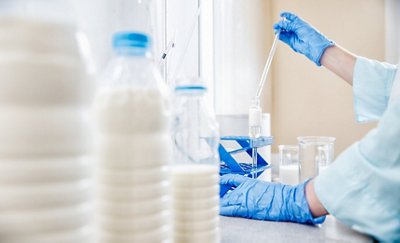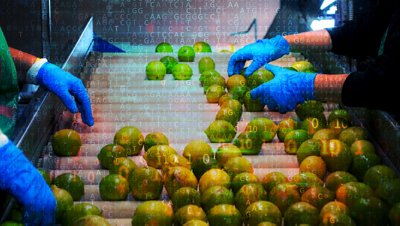How Modern Quality Assurance Technologies Keep Dairy Products Safe and Nutritious?
By the bioMérieux Editors | Reading time: 3 min
PUBLICATION DATE: AUGUST 30, 2023
Milk and dairy products can play an important role in a balanced diet, providing important sources of protein, iodine, calcium, and other vitamins. The dairy sector continues to grow quickly with global milk production projected to increase by 177 million tons by 2025.
Modern dairy quality assurance plans have worked to make dairy products safe for consumption for millions of people around the world. Raw milk is produced without the many tools created in the last century to ensure dairy safety, from heat pasteurization to rapid diagnostic technologies that detect contamination. “Without these standard quality assurance technologies, the safety of these products depends completely on farm hygiene, which needs to be consistent and excellent to mitigate contamination”, according to Karen Mullen of bioMérieux.
Mullen, who has worked closely with research farms and dairy companies that produce milk, yogurt, cheese, and other common dairy products, said “we work with these companies (and provide) various test platforms to detect microorganisms that cause human illness.”
Most large scale dairy farms focus on increasing yields. That’s not to say that quality is not very important to them—in fact, they spend a great deal on quality control and animal health. For high quality milk and cheese, a farmer must use high-quality cattle that are closely monitored to ensure their health.
“We can help some clients determine the antibiotic susceptibility patterns of the organisms in their herds. This allows them to select the most effective antibiotics for their cows, which helps them reduce the amount of antibiotics that they use. Reducing antibiotic use in cattle is a common goal, but it’s our goal to make sure that we reduce the use of ineffective antibiotics,” said Mullen.

Antibiotic misuse and overuse in animals is a common denominator for increasing antimicrobial resistance (AMR) worldwide. Not only does refraining from ineffective antibiotic use in animals help ensure food quality, but it also helps to combat the rise and spread of AMR.
Cattle are vulnerable to a variety of infections, including Klebsiella, E. coli, but especially Staphylococcus aureus, Streptococcus dysgalactiae, and Streptococcus uberis, which are very common causes of bovine mastitis. This persistent inflammatory reaction of the udder reduces milk yields and ultimately can lead to the cow being culled from the herd.
Milk from infected cows contains causal bacteria as well as a dramatic increases in immune cells that flock to the udder to fight the infection. Mastitis is detected by culturing milk from infected animals to detect and identify the infection as well as by taking a somatic cell count (SCC)—which measures the number of immune cells responding to the infection. A SCC of 100,000 cells/mL is normal for a healthy cow, while a count above 250,000 indicates that there is a significant infection.
These indicators of infection are primarily important for quality control , but also for the production of certain dairy products. For example, sour cream and cottage cheese are produced by intentionally adding harmless bacteria to milk, specifically Lactobacillus, which causes carbohydrate fermentation creating lactic acid. Lactic acid thickens the milk and creates the acidic or “sour” flavor of these products.
The Lactobacillus fermentation process can be blunted by somatic cells, which kill Lactobacillus before it can do its job. So simply pasteurizing milk isn’t a solution for makers of cottage cheese and sour cream. They must start with milk with a minimum number of these immune cells.
“The microbiology testing solutions required for modern milk production must offer rapid, streamlined workflow that improves the quality of the final product and consistently delivers reliable results day after day,” Mullen said. “That’s the only way to protect consumers from dairy-borne infections. And based on the industry track record, it’s working very well.”
When it comes to consuming unpasteurized milk and milk products, the challenge to produce a safe product becomes exponentially more difficult. Mullen says, “As for unpasteurized milk, your customer’s safety—not to mention your farm’s reputation—absolutely depend on knowing your product is free from pathogens and that’s just very, very difficult to do, especially for small dairy farms which typically don’t have access to the rapid, high-tech testing required to quickly identify pathogens at the origins of the milk.”
Opinions expressed in this article are not necessarily those of bioMérieux.
YOU MAY BE INTERESTED IN THESE ARTICLES
SHARE THIS:
- Food Safety

%20-%20INDUSTRIE%20AGROALIMENTAIRE?qlt=85&ts=1693394204022&dpr=off)
